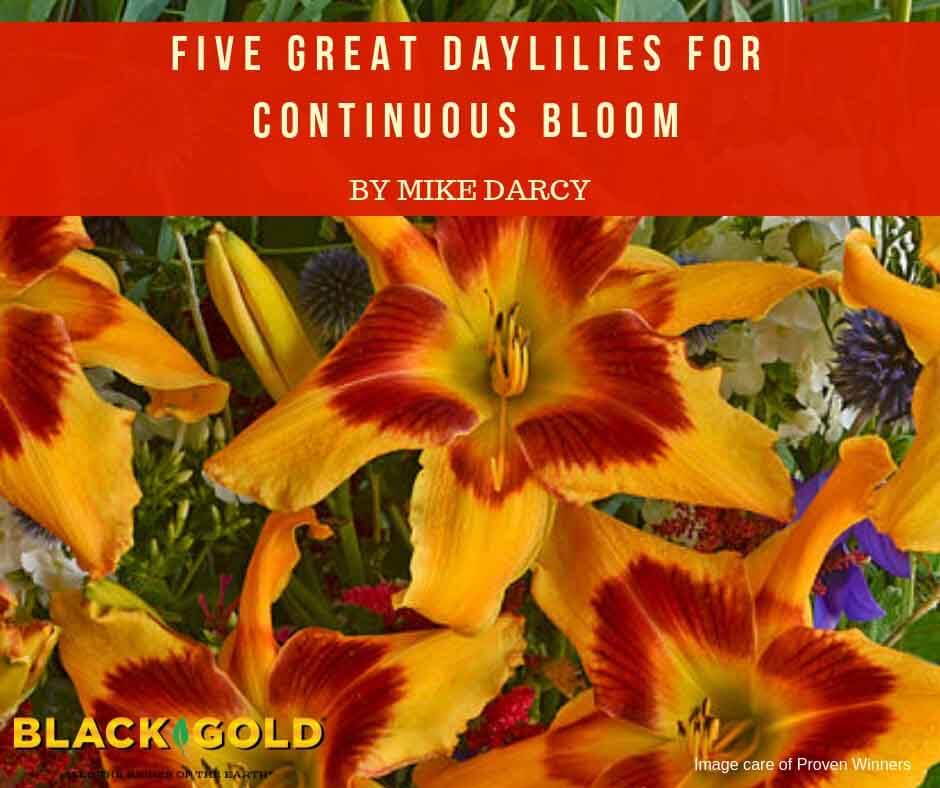
Daylilies (Hemerocallis spp.) are one of the most welcome flowers of summer, but most bloom for just four to five weeks, some blooming earlier and others later. This is why daylily hybridizers have worked to breed daylilies with longer bloom times. These days, there are more and more great rebloomers on the market for gardeners to plant and enjoy.
About Daylilies
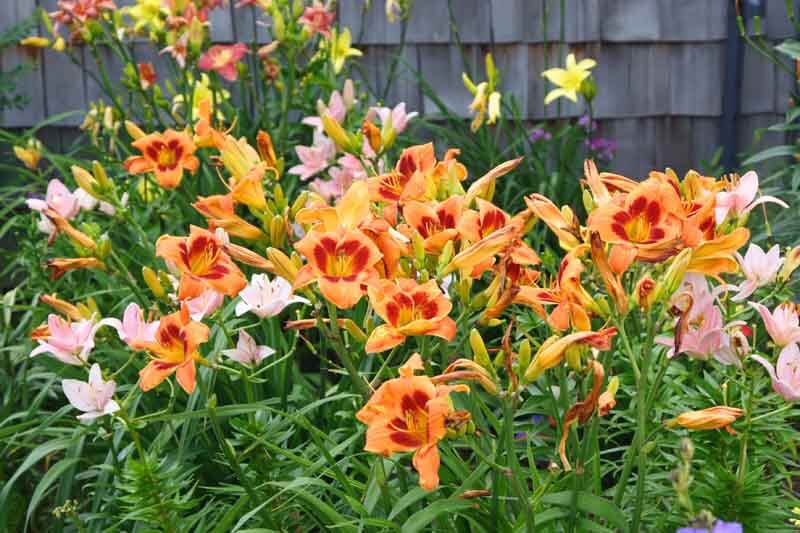
Daylilies belong to the genus Hemerocallis–a name derived from the Greek words hemera (day) and kallos (beauty). The genus was originally named by Swedish botanist Linnaeus, the father of modern taxonomy and plant classification. Linnaeus originally classified these plants as part of the lily family but more recently they have been moved into their own plant family, Hemerocallidaceae.
These flowers have a long history and are known to have been cultivated during the time of Confucius, (551-479 BC). Originally these long-lived perennials were grown for food and medicine. The Asian natives reached Europe in the 1500s and, along with peonies and lilacs, were one of the earliest ornamental plants taken to the New World by colonists. The standard ditch lily (Hemerocallis fulva) was the common species grown. The wild nature of these orange-flowered daylilies made them less garden worthy by the standards of today, but nevertheless, they offered seasonal color in early gardens. They were also easy to grow, required little care, and could grow in diverse environments.
About Reblooming Daylilies
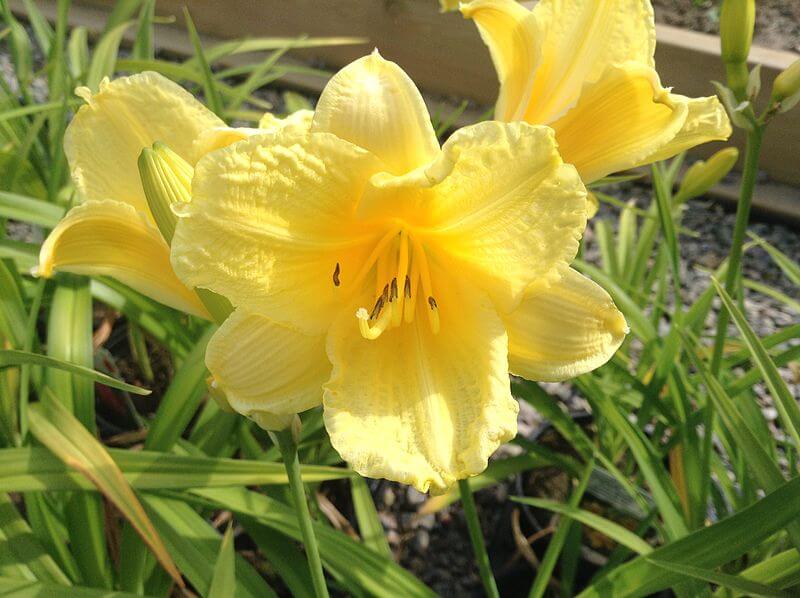
Before the 1970s, daylilies were less popular in ornamental gardens. This was because of their relatively short bloom period, the straggled and unkempt look of their late-season foliage, and the bank of more garden-worthy flowering plants with continuous summer blooms. Then reblooming daylilies began to appear. The most popular of these was the 1975 introduction, ‘Stella de Oro’. It was the introduction of this daylily that inspired a widespread change in perceptions about daylilies. ‘Stella de Oro’ has compact foliage, golden flowers. and probably the most important feature, a long blooming season. It became the new role model for daylilies and is still one of the most popular landscaping daylilies today.
With the attributes of ‘Stella de Oro’, a new interest in daylilies began and home gardeners suddenly began using them in their ornamental gardens. Plant breeders began to make crosses, and soon there were new colors of daylilies that were rebloomers. (I recently spoke with a daylily grower about rebloomers, and he commented that for summer-long bloomers he preferred the term continuous bloomers because they begin blooming in mid-June and continue through the summer and often into September.) Here are some of the best rebloomers beyond ‘Stella de Oro’.
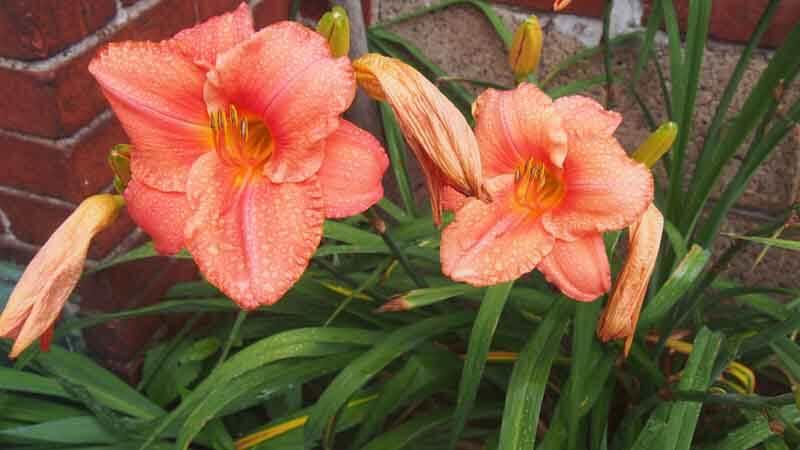
Hemerocallis ‘Apricot Sparkles’: Introduced in 2000, this compact, continuous bloomer has apricot-colored flowers that are large and showy.
Hemerocallis ‘Buttered Popcorn’: This award-winner is a reliable rebloomer that was bred in 1971. Despite its fine, fragrant, butter-yellow blooms on 32-inch stems, it did not win the quick popularity of the more compact ‘Stella de Oro’.
Hemerocallis ‘Daring Deception‘: Grow this 1994 rebloomer for its wonderfully fragrant flowers of pale lavender pink with purple edges and a central eye. The plants reach 24-inches tall.
Hemerocallis Happy Ever Appster® Daylily Series: Bred by famed daylily breeder Dr. Darrel Apps, the daylilies in this series include many favorites, many of which are ‘Stella de Oro’ hybrids. The series includes popular varieties, such as the classic ‘Happy Returns’, a compact rebloomer from 1996 with cheerful primrose yellow flowers.
Hemerocallis Rainbow Rhythm® Daylily Series: There are so many beautiful, reliably reblooming daylilies in this group that its cultivars are sold by Proven Winners. Try the spectacular variety Rainbow Rhythm® Tiger Swirl, which has huge 7-inch flowers of gold with a red central eye.

This is just a small sampling of the many rebloomers available. After visiting several garden centers and looking at catalogs and online sources for daylilies, the selection of “continuous” bloomers is vast. There is huge diversity in daylily flowers in lots of colors, many with dark edges and centers. Flowers not only come in single forms but semi-doubles and doubles as well as those with ruffled edges. Most have arching foliage, and plant height is variable with some growing only about 12-inches tall and others reaching 3-feet high or more.
Growing Daylilies
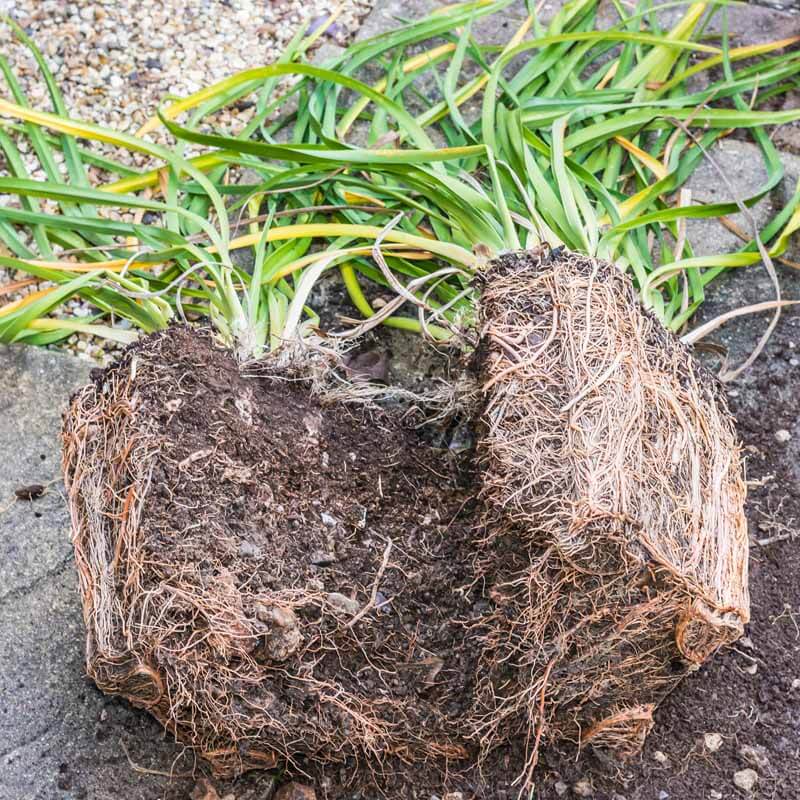
Luckily for gardeners, daylilies are exceptionally easy to grow. They perform best in a soil that has been amended with compost. Black Gold Garden Compost Blend is ideal. Give daylilies a  location where they will receive sun for at least 5 hours a day. Plant the crown of a new plant slightly below the soil surface to protect the overwintering buds. Placing mulch around the base of your daylilies in the fall to further protect them during the winter. Daylilies are easily divided if their clumps become too large for an area.
location where they will receive sun for at least 5 hours a day. Plant the crown of a new plant slightly below the soil surface to protect the overwintering buds. Placing mulch around the base of your daylilies in the fall to further protect them during the winter. Daylilies are easily divided if their clumps become too large for an area.
As with many plants, keeping the old blooms picked off will encourage more flowers. If the foliage starts to look unkempt in late summer, gently pull off the browning leaves to refresh the plant’s overall look.
If you think of daylilies as short-season blooming plants, check out the many new continuous bloomers. This is an excellent time to plant them, and plants from a local garden center will probably be in bud or bloom providing instant color.

